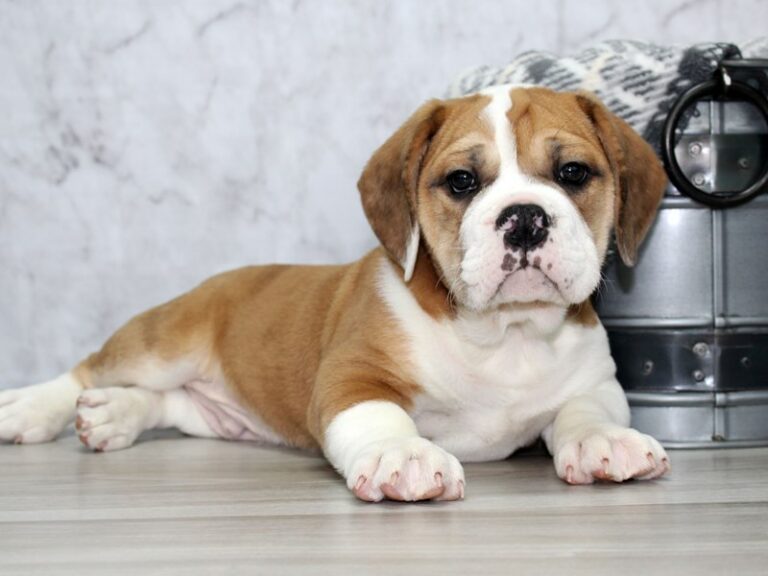Beabull Dog Breed Information
The Beabull, a cross between the energetic Beagle known for its howl and floppy ears and the dependable English Bulldog, is gaining popularity as a candidate for the best family dog in the dog breeding community. This mixed breed, considered one of the best family dogs, stands out for its loving nature, forming strong connections with its dog owner.
Beabulls, with their attractive looks and friendly personalities, are becoming popular as family dogs; however, a prospective dog owner needs to consider Beabull’s care needs and potential health issues. Understanding the whole picture, from the number of daily walks they need or how often they require a trip to the dog park to their potential health problems, is crucial for integrating a Beabull into your home.
To truly enjoy life with a Beabull, a fantastic family dog, be ready for rewarding experiences, commitments like daily walks, and managing their bursts of energy.
When considering a Beabull, looking past their captivating mix of the Beagle and the English Bulldog breeds to the sincere commitment required for pet ownership proves indispensable. Their care involves more than admiring their Beagle and English Bulldog lineage; it includes a commitment as a responsible dog owner to their well-being and happiness.
Key Takeaways
- Beabulls, considered as designer dogs, are a mix between a Beagle and an English Bulldog.
- These best family dogs are affectionate and adaptable companions, with their floppy ears adding to their endearing look.
- Beabulls, known for their frequent bursts of energy, require regular exercise and a daily grooming routine which includes taking care of their wrinkles.
- Frequent visits to the dog park can help Beabulls maintain good health; however, they can be prone to issues like hip dysplasia and respiratory problems.
Quick Facts
Beabull dogs are a mix between a Beagle and an English Bulldog. They inherit traits from both breeds, known for their loyalty and loving nature.
Beabull puppies, with their floppy ears and various coat colors, make adorable family dogs. Their short coat, full of wrinkles, requires regular brushing, and they tend to shed a lot, which might concern future dog owners with allergies. These best family dogs adapt well to living in small spaces like apartments and enjoy frequent trips to the dog park, but given their bursts of energy, it’s best to supervise them around children.
Regarding their health, Beabulls, even as top family dogs, can face challenges such as hip dysplasia, eye problems, and breathing issues. Regular check-ups with the vet, especially after heavy bouts of activity like a serious romp in the dog park, are an excellent idea to maintain Beabull’s health.
Training Beabulls, with their floppy ears and stubborn nature, might be challenging, but these family dogs respond well to positive rewards, making the daily walk an exciting event.
The International Designer Canine Registry acknowledges Beabulls as a distinct designer breed, and tips on their care are prevalent among dog lovers and breeders, ranging from Beabull puppies for sale to grooming techniques for these heavy shedders.
Beabull Dog Breed Pictures
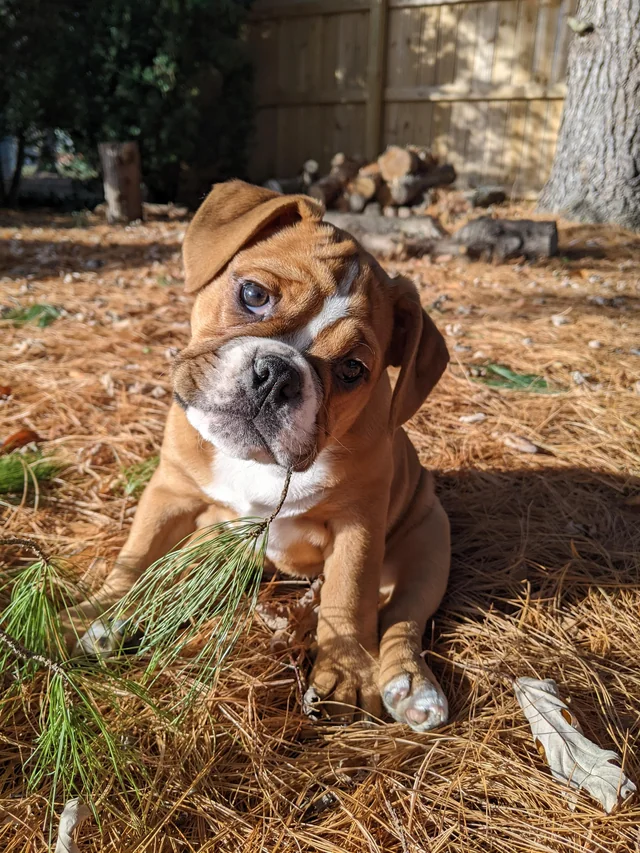
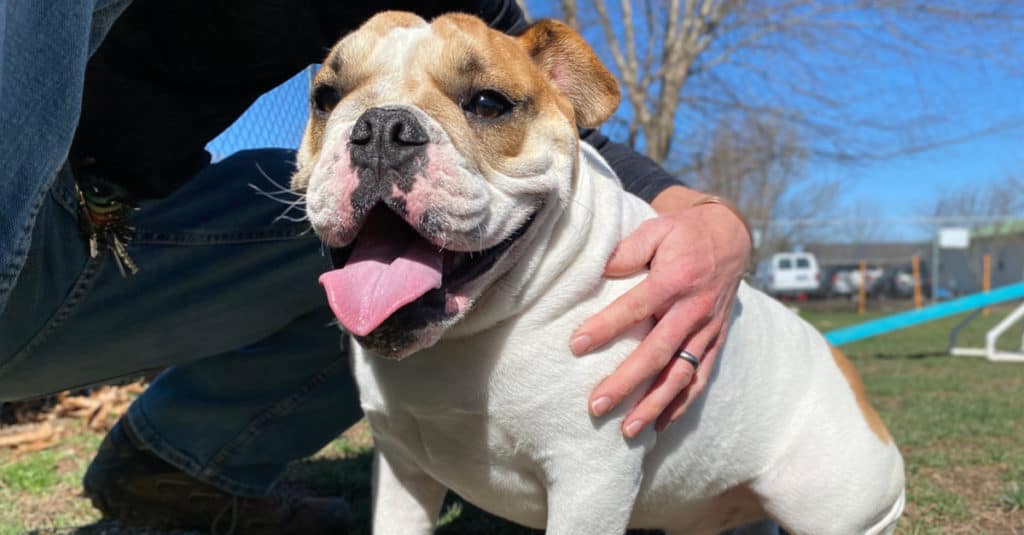
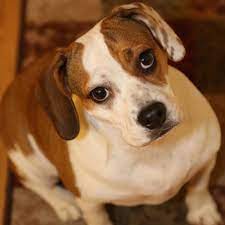
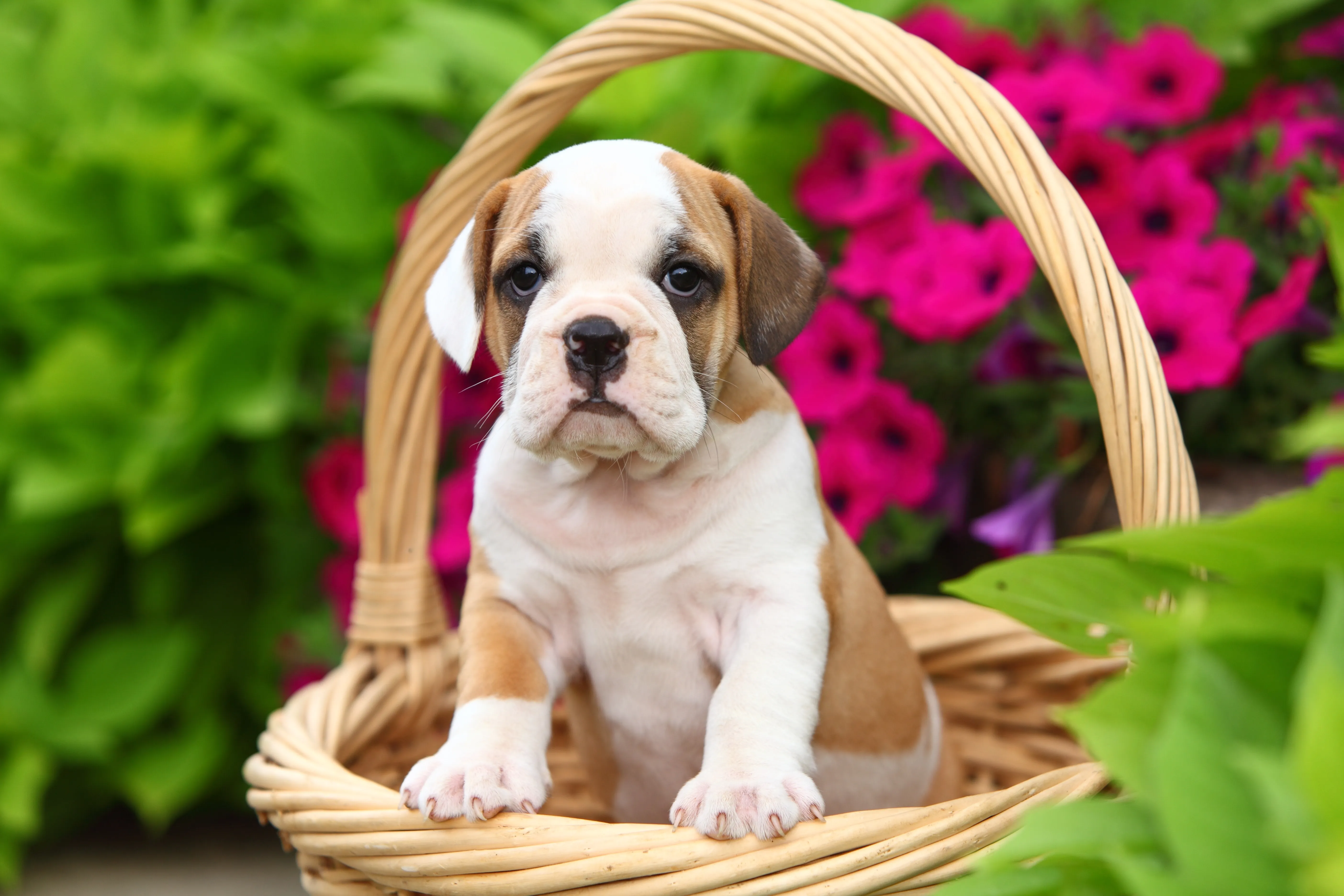
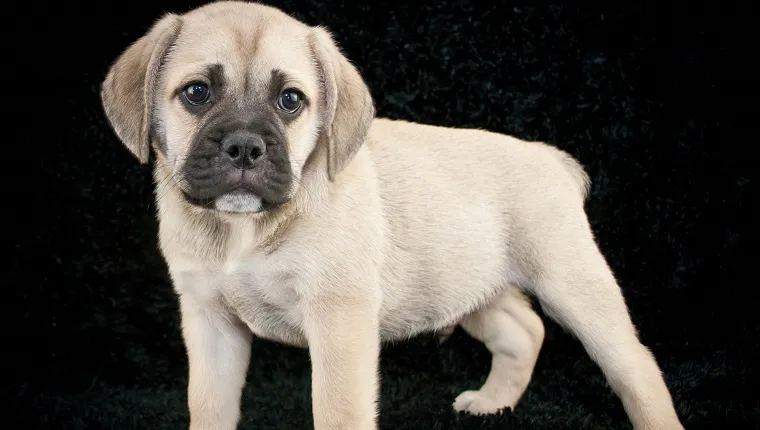
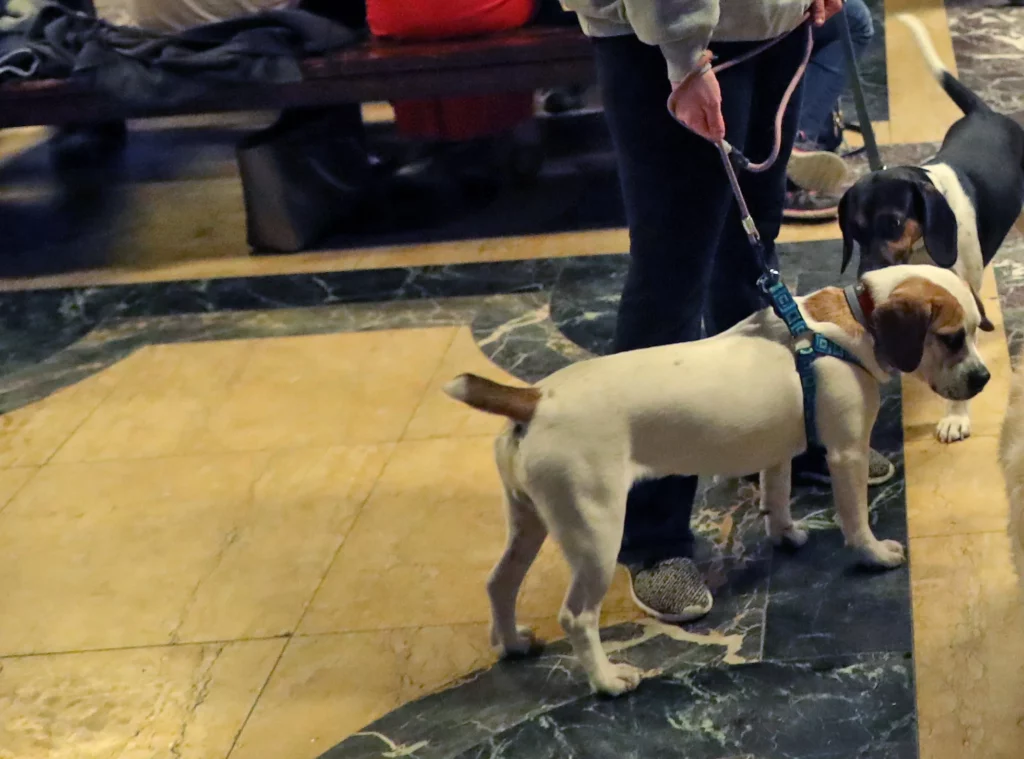
Overview
Building upon the foundational traits of Beabulls as a crossbreed, this overview aims to provide a comprehensive understanding of their characteristics, suitability for various living environments, and grooming requirements.
As a designer breed, Beabulls amalgamate the loyalty and curiosity of the Beagle with the loving disposition of the English Bulldog, fostering an affectionate and adaptable companion. These dogs are often available for adoption, a commendable route for prospective owners.
Apt for apartment living, Beabulls should embody tranquility, low-energy levels, and courteous behavior to thrive in such settings. Their grooming, while straightforward due to a short coat, necessitates daily brushing to manage heavy shedding, posing a challenge for allergy sufferers.
This synthesis of traits underscores the Beabull’s potential as a fitting pet for diverse households.
Key Beabull Traits
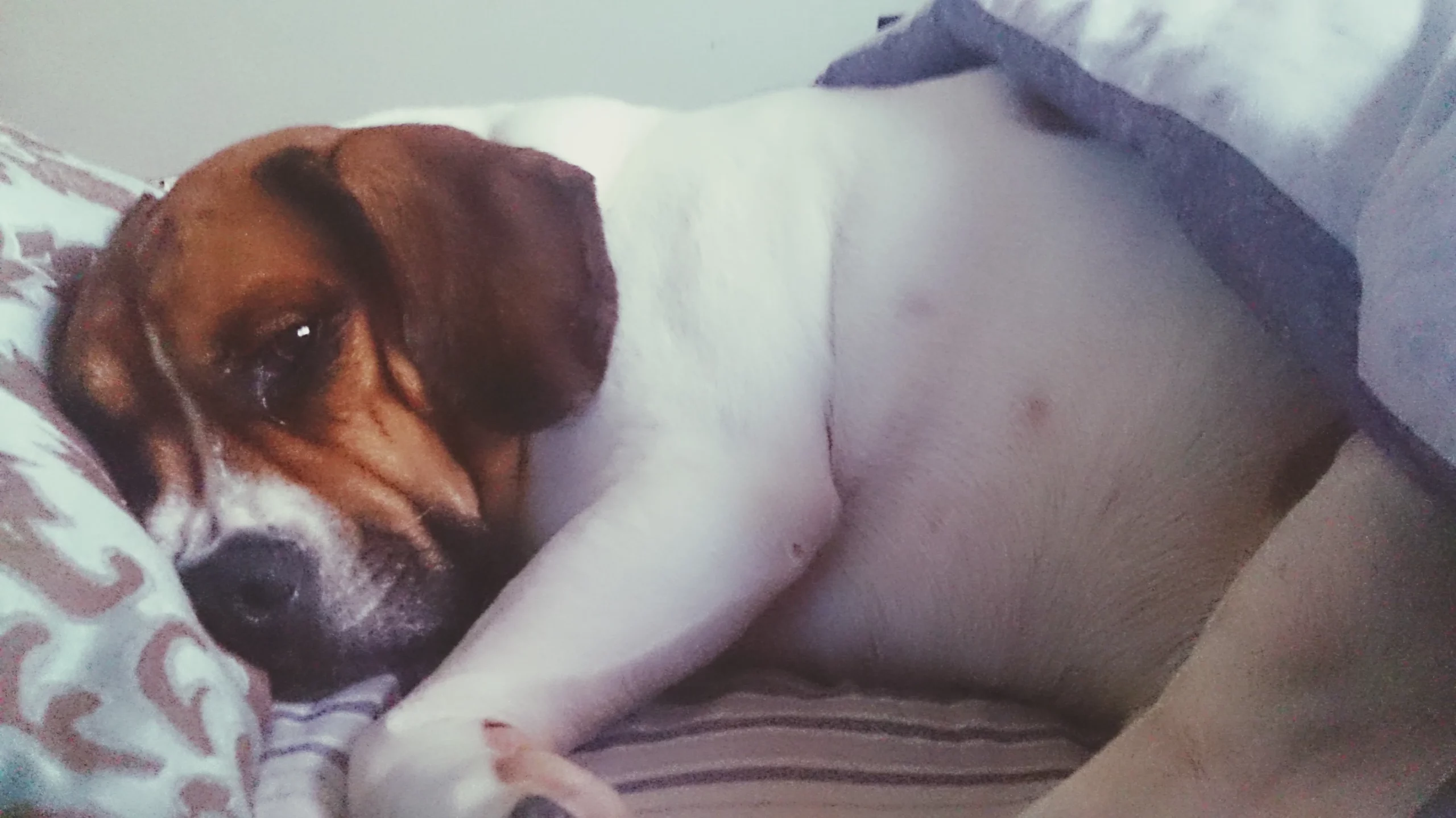
Delving into the core characteristics of Beabulls, this crossbreed exhibits a harmonious blend of loyalty, curiosity, and affection, traits inherited from their Beagle and English Bulldog lineage. The Beabull mix is adaptable to various living conditions, including apartments, provided they receive adequate exercise to manage their moderate energy levels. Their friendly nature makes them well-suited to family life, though their potential for stubbornness requires a consistent approach to training.
| Trait | Description | Consideration |
|---|---|---|
| Adaptability | Thrives in both apartments and larger homes | Needs regular exercise and mental stimuli |
| Grooming | Short coat that is prone to heavy shedding | Regular veterinary care and a healthy lifestyle are essential |
| Temperament | Affectionate, loyal, and curious | Can exhibit stubbornness; requires patience in training |
| Health | Susceptible to hip dysplasia, respiratory issues | Regular veterinary care and a healthy lifestyle are essential |
Origins of the Beabull Puppy and Adult
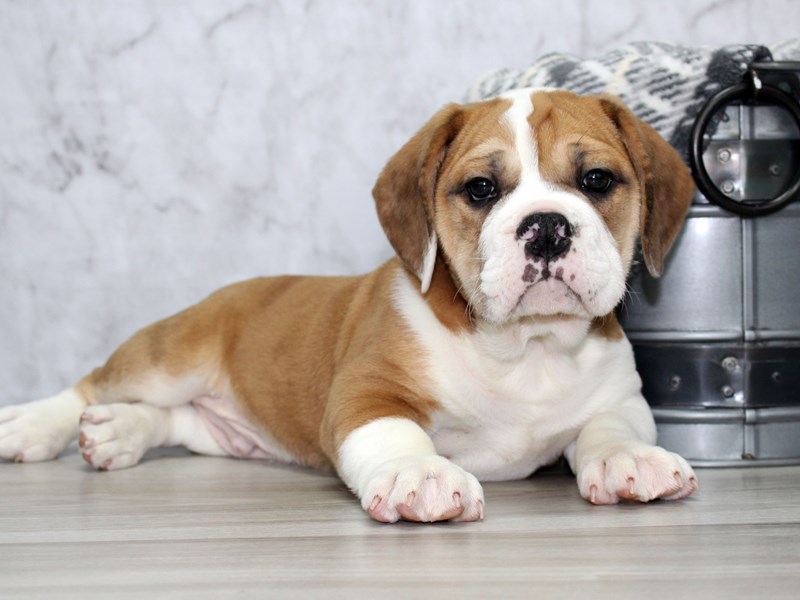
The Beabull is a mixed-breed dog that was deliberately created by merging the traits of Beagles and English Bulldogs. This new type of dog was conceived with a goal in mind:
Understanding Beabull’s Origins involves looking into why breeders wanted to combine the laid-back nature of Bulldogs with the festive spirit of Beagles.
The crossbreeding process of beagles and bulldogs includes the careful genetic selection and breeding strategies used to maintain the preferred qualities in beabulls.
Reviewing Beabull’s History covers how the breed has grown and changed since it first appeared in the 1990s and how it has been accepted and recognized by dog breed organizations.
Beabull Breed Genesis
The Beabull is a hybrid breed created by mixing Beagles with English Bulldogs. Breeders aimed to merge the best qualities of both dogs: the Beagle’s loyalty and curiosity and the Bulldog’s affectionate nature. This mix was designed to produce a dog with a sharp sense of smell and a friendly, brave personality.
Beabulls make great companions, showing a mix of traits from their parent breeds. They are versatile and can thrive in various homes. However, potential owners should be aware of their tendency to shed and their need for temperature control due to their sensitivity to heat and cold.
Crossbreeding Beagle and Bulldog
The Beabull is a mix between a Beagle and an English Bulldog, crafted to combine the best traits of both dogs into a great pet. This hybrid dog is loyal, like its Beagle parent, and loving, like the Bulldog.
The Beabull can live happily in smaller spaces like apartments if they get enough exercise and mental stimulation. They shed a lot, so they need to be brushed daily, which might not be great for people with allergies. If they’re socialized well, they usually get along with other animals.
Owning a Beabull means being proactive about their health. They can get certain illnesses common in their breed, so it’s essential to keep up with regular vet visits, a good diet, and plenty of exercise.
Historical Beabull Development
The Beabull is a charming mixed-breed created by mating Beagles with English Bulldogs. This breed combines the best qualities of both its parents, mixing the English Bulldog’s friendly and mild nature with the Beagle’s curiosity and sociability. Breeding efforts to create the Beabull were intentional, aiming to produce a dog with an even-tempered personality that fits well in various homes.
These dogs are adaptable and can thrive in an apartment setting with enough exercise and mental stimulation. The grooming needs of a Beabull are relatively low-maintenance; they inherit a coat that’s easy to care for from the English Bulldog side. However, due to the Beagle’s tendency to shed, they will need regular brushing to keep their coat in good condition.
Physical Dimensions and Dog Breed Information
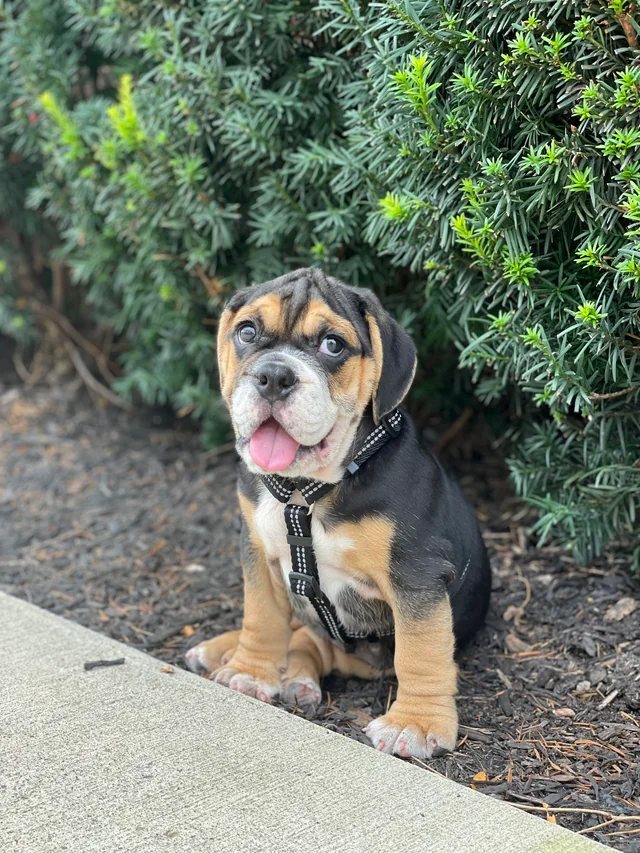
Their Bulldog and Beagle heritage influences the physical dimensions of Beabulls, resulting in various sizes and shapes. This affects not only how they look but also their health.
Regarding weight, these dogs usually fall between 30 and 60 pounds. This range puts them in the medium to large category for dog breeds.
As for their height, they typically stand from 12 to 16 inches at the shoulder. This gives them a solid and sturdy appearance.
Their body shape blends the Bulldog’s muscular build and the Beagle’s longer physique. This combination affects their movement and overall agility.
Typical Beabull Stature
Beabulls are known for their sturdy and muscular bodies, inheriting traits from Beagle and Bulldog ancestors. Their weight can fall between 30 to 60 pounds, showcasing the varied genetics of their parent breeds. These dogs have a muscular build, often reminiscent of the Bulldog’s form, but some may appear leaner, thanks to the Beagle’s influence. Heights can differ, but they typically fit into the medium-large dog category.
Their short fur comes in various hues and patterns, such as brown, golden, and brindle, combining their Beagle and Bulldog roots. To keep their coat healthy and minimize shedding, regular grooming is required. This ensures they look their best and exemplifies the breed’s distinctive looks.
Weight Range
Beabulls, a crossbreed between Beagles and Bulldogs, have a weight range of 30 to 60 pounds. This variation is due to their unique genetic makeup and individual growth patterns. Some may be lighter, showing traits from their Beagle heritage, while others may be heavier, taking after their Bulldog ancestors.
Factors such as diet, exercise, and health significantly influence weight. Owners should closely monitor their Beabull’s weight by working with a veterinarian and promoting a healthy lifestyle.
Height Measurements
Measuring a Beabull’s height from the ground to the withers is crucial for fitting pet gear comfortably. Getting this right is critical to prevent discomfort or the risk of the dog slipping out of its bag.
Beabulls have varied heights due to their mixed breeding, so measuring each dog individually is vital. Using a standard method gives us reliable height measurements. These are usually in inches, making tracking a Beabull’s size easy.
Keeping accurate records of a dog’s height helps ensure they live a healthy, comfortable life.
Body Proportions
When you look at a dog, its shape and build are defined by the balance of its body parts, like how long its legs are compared to its body and the size of its head. These features are not just about looks; they also affect a dog’s abilities and health.
For instance, Beabulls, a mix of Bulldogs and Beagles, show many variations. Bulldogs have a hefty figure, broad shoulders, and short legs, giving them a low, powerful stance. Beagles have a more proportionate build with medium-length legs and a smaller head. So, a Beabull might have a mix of these characteristics, which can influence how they move, how long they can be active, and what health problems they might face.
Knowing about body proportions helps to see if a Beabull fits the breed’s expectations and what it might be capable of doing.
For example, if you’re considering adopting a Beabull, you might notice their build could either lean towards the Bulldog’s muscular frame or the Beagle’s more athletic form. This will give you a clue about how much exercise they’ll need or how they’ll handle long walks. It’s also an excellent way to guess if they might have joint problems, which Bulldogs often face, or if they’ll be more like Beagles, who are generally healthier.
When choosing a dog, it’s not just about how cute they are; it’s also about being ready for the kind of care they’ll need based on their physical traits.
Growth Patterns
To ensure the health and proper development of Beabulls as they grow from energetic puppies to adults, it’s essential to understand how they grow. Beabulls usually hit their full size between 12 to 24 months. Their growth rate can vary due to their genes, what they eat, and how they’re cared for.
Beabull pups tend to grow the quickest in the initial weeks to months. During this phase, monitoring their health and tweaking their food and activity levels as needed is vital. Growth usually slows down around their first birthday, with a steady but slower increase until fully grown. It’s critical to have regular vet visits in the early years to catch any unusual growth patterns or health problems early on.
Understanding their growth trajectory is critical to anticipate a Beabull’s physical development and potential health issues related to size. Typically, Beabulls will reach their maximum size by the age of one to two years. Factors like genetics, nutrition, and overall care can affect their growth.
Beabull puppies grow most rapidly in the initial weeks and months. It is critical to monitor them closely and adjust their diet and exercise to promote healthy growth. Once they’re nearing one year old, their growth rate decreases, and they grow more slowly until they’re fully mature. Ensuring regular vet check-ups can help address any issues with growth or health during these crucial years.
Temperament Traits
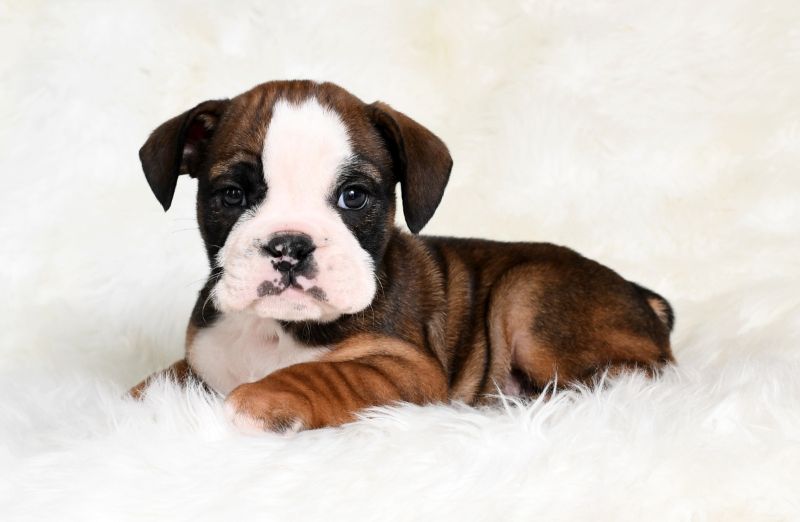
The behavior of Beabull dogs is complex and shaped by their ancestry. When looking at their personalities, it’s essential to note:
- Beabulls are loving pets, forming deep attachments with their families. They are known for their loyalty and strong connection to those they live with.
- It is crucial to expose them to new people and situations regularly. This helps prevent stubborn behavior and ensures they are well-behaved.
- These dogs have a mix of playfulness and an instinct to guard. How they react to new faces and different surroundings can vary.
Understanding these traits is essential for a smooth transition into their new home, benefiting the Beabull and their human family members.
Affectionate Family Companions
Beabulls are loved for their friendly and faithful nature, making them a perfect fit for families. These dogs combine the Beagle’s curiosity with the English Bulldog’s loyalty. They create a loving environment that strengthens family bonds.
Beabulls greet their owners with wagging tails, showing their desire to connect. They are great with kids due to their gentle behavior, which ensures safe interactions.
These dogs also get along with other pets, highlighting their friendly personality. The mix of their Beagle and Bulldog heritage contributes to their loving characteristics. Beabulls are genuinely valued as household pets.
Socialization Requirements
Socialization is critical to developing a friendly and well-behaved Beabull. Starting from when they’re puppies, it’s essential to introduce them to new people, animals, and environments. This helps prevent fear, shyness, or aggression as they grow up.
Owners should create a variety of situations for Beabulls to experience. This builds their confidence and reduces nervousness. Training should be interactive and enjoyable. Beabulls must learn to interact positively with other dogs and humans in different settings.
Consistent and routine socialization is necessary even as Beabulls get older. It helps them stay calm and friendly in new scenarios. A well-socialized Beabull can handle unfamiliar situations with ease and friendliness.
Potential Stubbornness
While establishing a foundation of socialization is pivotal for a Beabull’s development, addressing their inherent stubbornness, a trait inherited from their Beagle and Bulldog lineage, is equally critical to ensure a well-adjusted temperament. Firm and consistent training methodologies are paramount in curtailing the independent thinking that can manifest as obstinacy.
Implementing positive reinforcement strategies can be particularly effective, as they exploit the Beabull’s capacity to be eager to please when adequately motivated. This approach fosters a more amenable learning environment that systematically diminishes their stubborn tendencies.
Moreover, it is essential to recognize the need for patience and understanding in the face of their determination. A comprehensive knowledge of the breed’s potential for stubbornness empowers owners to cultivate a balanced and harmonious relationship with their Beabull.
Playfulness Level
Beabulls are known for their energetic and spirited demeanor, which means they need lots of active play and brain games to keep them happy and well-behaved. They’re a playful breed and do best when they have plenty of chances to burn off energy. These dogs might nibble in play due to their lively nature, so good training is crucial in managing this habit. They love to play fetch, showing their need for exercise and mental stimulation.
To keep a Beabull’s friendly nature in top shape, it’s important to exercise them regularly, use positive reinforcement in training, and make sure they get plenty of social interaction. This helps prevent any mischief that might come from their strong hunting instincts.
Guarding Tendencies
The Beabull dog breed has an innate protective instinct that makes them great at watching over their families and homes. These dogs are intelligent, strong, and love to learn, which helps them be suitable guardians.
Training and socializing them from a young age is essential to ensure they’re well-behaved. Proper training helps them stay alert and watchful but not overly aggressive. They need a consistent leader and transparent rules to be obedient and easily managed.
Using rewards and keeping their minds and bodies active helps keep their protective behavior under control. This way, they grow up to be friendly and well-mannered pets.
Beabull Wellness Considerations
Ensuring the well-being of Beabulls involves a comprehensive strategy that addresses various aspects of their health. The following points outline the key areas to focus on for keeping these dogs healthy:
- Proactive Health Checks: Regular vet visits and genetic screening help catch and manage inherited health issues early on. Staying on top of these examinations is vital to prevent severe conditions from developing.
- Recognizing Health Problems: Recognizing and spotting symptoms of common ailments, such as respiratory difficulties due to their short muzzles or spinal issues, allows for quick and effective treatment. Early detection can make a big difference in the outcome for your dog.
- Routine Preventive Care: A consistent schedule of vaccinations, treatments for parasites, and maintaining oral health is necessary to avoid many preventable diseases. This kind of care is indispensable for Beabulls’ long-term health.
Understanding these aspects is critical to supporting both the physical and mental well-being of Beabulls. Regular care and attention to these areas will help these dogs lead happy lives.
Health Screening Tips
For the well-being and long life of Beabulls, regular vet visits are crucial to catching and managing health issues early. These dogs can suffer from problems like hip dysplasia, eye issues, and breathing troubles. It’s also important to watch out for knee problems like patellar luxation. Vet check-ups must include complete physical exams and, sometimes, imaging tests to check the joints.
Keeping Beabulls on a healthy diet helps their bones and joints and prevents them from becoming overweight, which can worsen joint problems. They also need regular exercise to maintain a healthy weight and keep their joints healthy.
Proper grooming helps with allergies and reduces shedding, which is good for their skin health.
Breeders must be responsible and careful to keep these health problems from being passed down.
Common Health Issues
Preventative care is crucial for Beabulls to combat common health issues such as hip dysplasia, eye conditions, and breathing difficulties. These dogs need regular check-ups with the vet.
Early detection of hip dysplasia is critical to managing this painful joint problem. Beabulls can inherit a short skull shape, making them prone to respiratory issues in hot or cold weather. It is essential to keep them in a comfortable environment and watch for signs of distress.
Regular eye exams are necessary to prevent vision problems from worsening. A healthy diet and proper exercise can help reduce the risk of these issues. Keeping Beabulls active and well-fed supports their overall health and happiness.
Preventive Care Strategies
To keep Beabulls healthy in the long run, it’s vital to have a thorough plan that includes regular vet visits, careful grooming, a balanced diet, and sufficient exercise. Such steps help catch and address health issues early.
Daily coat brushing is essential for Beabulls, as they tend to shed a lot; it keeps loose fur under control and can help lower allergens at home. A quick wipe down with a moist cloth also keeps their coat clean.
A nutritious diet and consistent exercise are crucial to prevent common breed issues like hip dysplasia, eye conditions, and breathing problems.
Providing a comfortable home and early socialization, including interactions with kids, is essential for their mental well-being.
Essential Beabull Maintenance
Looking after a baby, you’ll need a consistent routine to keep them happy and healthy. Here’s what to keep in mind:
Regular grooming is non-negotiable. Brush your Beabull daily to control hair loss and keep their coat in good condition.
Exercise should be part of their daily life. It helps prevent weight gain and is suitable for their mental health. Create a workout plan that suits your dog’s needs.
Staying on top of their health is crucial. Regular vet visits and a well-rounded diet help avoid typical health problems in this breed.
Beabull Grooming Routine
To control the Beabull’s heavy shedding, brushing their short coat daily is essential. Not only does this keep them looking good, but it also helps keep them healthy.
Regular brushing removes dead hair and skin flakes, which can trigger allergies in sensitive people. Wiping your dog with a moist cloth can also help by picking up any stray hairs and giving them a quick clean.
This grooming practice lets you check Beabull’s skin for problems, which is vital since they can have specific health issues. Quick detection means quick treatment.
Daily Exercise Requirements
Caring for a baby involves more than just keeping them well-groomed. It’s also about making sure they get enough exercise each day to stay fit and mentally sharp.
Beabulls have moderate energy, so a mix of activities is ideal. They should be taken on a 40 to 60-minute walk every day. These dogs enjoy short, lively play sessions, including games like fetch or hide and seek.
For Beabulls, who can suffer from hip problems, it’s essential to design an exercise plan that doesn’t put too much stress on their joints. Also, Beabulls don’t do well in hot or cold weather, so you must consider the temperature when planning their exercise.
Making sure they’re active safely and comfortably is part of keeping them healthy.
Nutritional Needs
Beabulls, a cross between Beagles and Bulldogs, need a well-rounded diet to stay healthy. They have a moderate energy level and may have specific health issues to consider when planning their meals.
Balanced nutrition is vital for Beabulls to thrive. These dogs shed a lot, so they must include omega fatty acids for healthy skin and coat.
Since Beabulls can have sudden bursts of activity, they need enough proteins and carbohydrates to keep their energy up without gaining too much weight. It’s vital to watch their caloric intake and boost their diet with fiber to help with digestion and prevent obesity, which can be a problem for dogs that aren’t very active.
Regular check-ups with the vet are the best way to customize a Beabull’s diet to their specific needs.
Health Monitoring Tips
Beabulls, a mix of English Bulldogs, need regular health checks and exercise to stay healthy. Watching for illness signs is crucial because of their breed’s health risks. A good training routine is also essential for their physical and mental health.
Keep Beabulls cool since they can overheat quickly. Make sure they have shade and plenty of water. Brushing them daily is about more than looks – it’s a chance to check their skin and coat for problems.
Socialization Practices for Beagle and English Bulldogs
For a baby to grow up well-behaved, it’s crucial to introduce them to various settings and social situations while young. The American Canine Hybrid Club and the Dog Registry of America recognize these dogs.
A planned socialization process is beneficial for them. Exposing them to new sights, sounds, and experiences builds their confidence and reduces nervousness. Training them with rewards encourages good behavior and helps them form positive associations with new experiences.
Avoiding fear and aggression in Beabulls means regularly introducing them to new things. To keep their friendly and flexible nature, it’s important to continue socializing them throughout their lives.
Nutritional Guidelines: Beabull Puppies for Sale
For Beabulls to thrive, a nutritional plan that caters to their unique needs is necessary.
It’s essential to:
- Ensure their meals are well-rounded with all the necessary nutrients that match their age and activity levels.
- Establish regular meal times and control portion sizes. This helps Beabulls stay at a healthy weight and prevents stomach problems.
- Pay attention to any specific health issues that might require diet changes. If your Beabull has allergies or food sensitivities, consult a vet for a tailored diet plan.
Balanced Diet Essentials
A balanced diet is vital for keeping dogs healthy and energetic. It should include proteins, which help with tissue repair and growth. Carbohydrates are the primary fuel for your pet’s daily activities, while fats, especially unsaturated fats, support their brain health and are a backup energy source.
For overall wellness, dogs need vitamins and minerals, too, which are abundant in various fruits and vegetables. These nutrients bolster their immune system and strengthen their bones. Watching how much your dog eats is crucial to avoiding weight gain and keeping their diet balanced. Also, make sure they drink plenty of water to aid in digestion and the distribution of nutrients.
The popularity of certain dog breeds often highlights their friendly nature and distinct coats. However, providing a diet that meets their needs is essential. Combine good nutrition with regular exercise to keep your dog in top shape.
Feeding Frequency Tips
To determine the best feeding schedule for Beabulls, look at their age, size, and how much they move daily. Puppies usually need to eat more often, with about 3 to 4 meals a day to help them grow. Once they’re grown up, two meals a day is enough since they don’t need as much energy.
But watch out because Beabulls can overeat if you’re not careful. It’s essential to control how much they eat and keep their mealtimes regular to avoid obesity. Smaller meals spread out throughout the day can also help prevent stomach issues.
If you want to ensure you’re feeding your Beabull right, it’s a good idea to talk to a vet for advice that fits your dog’s needs.
Special Dietary Considerations
Proper nutrition for Beabulls is crucial to meet their needs and prevent health problems like allergies and overweight. These dogs are a mix of Beagle and Bulldog breeds, which may make them prone to specific sensitivities. They need a diet with plenty of high-quality protein to support their muscular bodies. They also need some healthy fats to keep their coats shiny and smooth. The right vitamins and minerals should match their energy levels, age, and any special health issues they might have.
It’s essential to keep an eye on how much they eat to help them stay at a healthy weight. Consulting a veterinarian is the best way to create a meal plan that’s just right for your Beabull.

